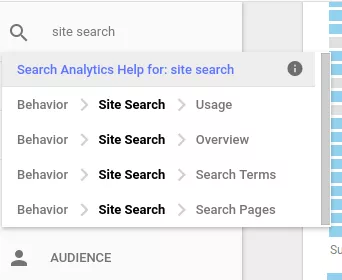In this article, we will see how to create a WordPress autocomplete search without the use of any plugin. Making a search engine is easier than ever before. With hosted search-as-a-service providers taking up the pain of building most of the search engines, the end-users’ role is limited to adding an HTML code snippet on their website to take the search live.

What is Autocomplete?
It is the capability to give completed queries or results directly even for a partial query. If you type “iph”, the system can guess that you are looking for an “iPhone”. This capability is called autocomplete. To know more, you can read all about autocomplete.
In the world of web development, providing a seamless and user-friendly experience is paramount. One crucial aspect that significantly impacts user interaction is the search functionality on your website. WordPress, being a popular content management system, offers various plugins to enhance search capabilities. However, in this article, we’ll delve into creating an autocomplete search feature without relying on plugins, giving you more control over customization.
Understanding Autocomplete Search:
Autocomplete search is a dynamic feature that predicts and suggests search queries as users type into the search bar. This functionality not only improves the overall user experience but also speeds up the search process, helping visitors find relevant content quickly.
Creating Autocomplete Search Without Plugins:
Utilizing Built-in WordPress Functions:
WordPress comes with built-in functions that can be leveraged to implement autocomplete search. Utilizing functions like get_posts or WP_Query can help fetch relevant results based on user input.
Ajax for Real-time Results:
Implementing Ajax (Asynchronous JavaScript and XML) is crucial for achieving real-time autocomplete results. Ajax allows the website to communicate with the server without requiring a page reload. This ensures that the search suggestions are updated dynamically as users type.
Customizing the Search Query:
To enhance the accuracy of autocomplete suggestions, consider customizing the search query. You can modify parameters such as post types, taxonomies, or metadata to tailor the results to your specific content structure.
Styling the Autocomplete Dropdown:
The visual aspect of autocomplete is equally important. Use CSS to style the dropdown menu containing search suggestions. This includes adjusting font size, colours, and positioning to ensure a visually appealing and cohesive design.
Handling User Interaction:
Implement functionality to handle user interactions with autocomplete suggestions. This involves capturing the selected suggestion and redirecting users to the relevant search results page or directly to the content.
Benefits of Autocomplete Search Without Plugins:
Performance Optimization:
By avoiding additional plugins, you can optimize the performance of your WordPress website. Unnecessary plugins can sometimes slow down the site, affecting user experience and search responsiveness.
Customization and Flexibility:
Building autocomplete search without plugins gives you complete control over the customization process. You can tailor the functionality to match the unique requirements of your website, ensuring a seamless integration with your design.
Reduced Dependency on External Code:
Relying solely on WordPress functions and Ajax reduces the dependency on external code. This simplifies the maintenance process and minimizes potential conflicts with other plugins or themes.
Pre-requisites for a successful implementation
- Your WordPress site should be live.
- You should have admin panel access to your WordPress site.
- Sitemap (not mandatory).

Steps to create a WordPress autocomplete search without a plugin
Here we will visit the steps required to add the ExpertRec Custom search engine to your website. This is one of the easiest setup processes of all the available options out there and is highly recommended.
- Navigate to https://cse.expertrec.com/newuser?platform=cse and signup with your Google ID.
- Enter your website’s URL when prompted. You can select a server location near you and add the URL of your sitemap if you wish to. These will be auto-detected otherwise.
- You can play around with the settings and customize the UI as the crawl runs. Once it is complete, you can check out a fully functional demo before taking the search to your website.
- You can take the search to your website with little to no effort. All you need to do is to paste the code snippet available on the dashboard on your website.

ExpertRec comes with more customization options that you can explore. You can read this article to find a more detailed guide on the installation and configuration.
Conclusion:
Implementing autocomplete search without plugins in WordPress is a rewarding endeavor that can significantly enhance user experience. By leveraging built-in functions, Ajax, and customization options, you can create a search feature that not only provides real-time suggestions but also aligns seamlessly with the design and functionality of your website. Take the reins of control and elevate your WordPress search experience for your users.



